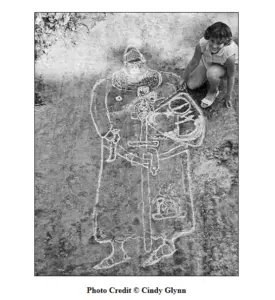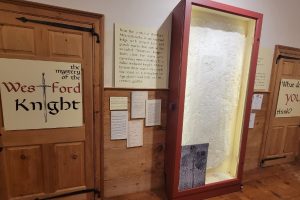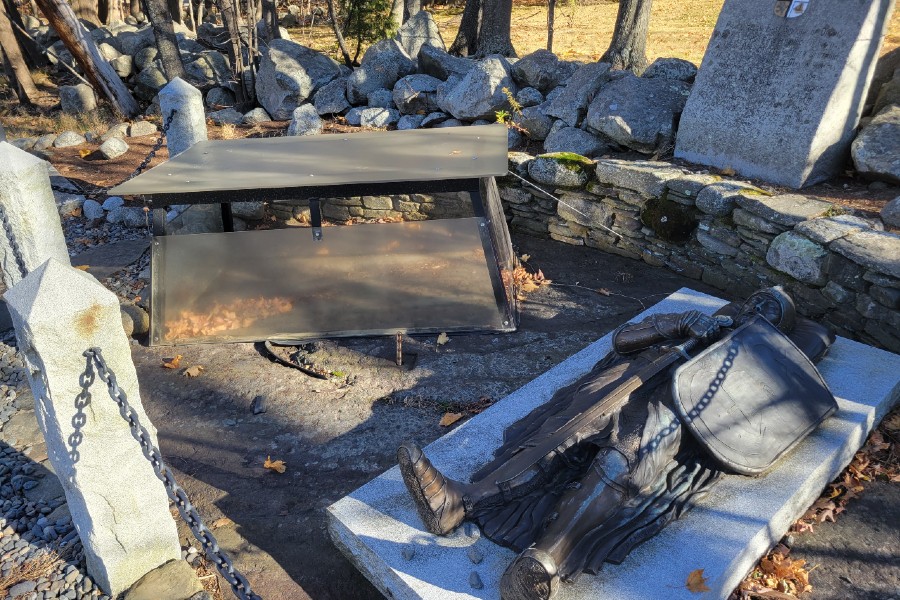The Westford Knight is one of Westford’s most well-known landmarks, but the historical background of the carving is much less commonly known. The puzzling stone carving’s place of residence is on the side of Depot Street, one of Westford’s highest traffic streets, and its mystery entices the many locals that cross paths with it daily.
Many theories surround the Westford Knight, as well as a lot of misinformation, but the only thing known for certain is that nobody is certain of its origins. One popular theory is based off of the known existence of a European expedition led by Prince Henry Sinclair of Scotland in North America around 1400 AD. In this theory, the carving was made as a tribute to one of the expeditionists who died while the group was traveling, and is meant to resemble a knight holding a sword and a shield.

However, a large issue of this theory is that due to the effects of erosion, the carving is much less visible than it would have been hundreds of years ago and it is difficult to say whether the carving is even of a knight holding a sword. Depending on who looks at the stone, two people could interpret two completely different images.
“I don’t think there is enough conclusive evidence. We are missing that one piece that indisputably proves [any theory],” Westford History teacher Andrew Norander said. “There has been a lot of weathering but the one part of it that you can still see with the naked eye is the sword, so I think that if you can make it out now, fifty or one hundred years ago I’ve gotta think that that sword would’ve stood out even more.”
Another theory takes into account the large population of Native Americans in New England. Considering the Native American theory suggests that the carving is of a tomahawk, a single-handed Native American axe, and that it may have been carved more recently, around the 18th century. This theory, however, was largely rejected by archaeologists who examined the stone as it was determined that the method of carving did not match the capabilities of the native tribes in the area.
According to Jeffrey Henry, the author of the historical nonfiction book The Signpost: The Evolution of the Westford Knight, archaeologist Steven Nicklas examined the stone face and determined that the carving was not Native American in origin. Nicklas deduced that it was more likely Scottish, based on its similarities to other Scottish carvings he had examined.

“[There are] some very polarized opinions about it,” Henry said. “There [are] people that are just gung-ho and supportive about [their theories]. And then you have others [on] the other side of the spectrum, talking about, how there’s no real corroborating evidence that there is something there [at all].”
The first time work was done publicly on the Westford Knight was in the 1900s, but even those records are not trustworthy. According to Henry, the archaeologist who was doing work on the site, Frank Glynn, admitted to tampering with the site itself in his notes, having left little punch marks in the rock to test it. The site is also located extremely close to an old and well-populated road which provides the site with little protection against being altered and it is not possible to know how much of the carving is legitimate.
Given all of this evidence, or lack thereof, the Westford Museum takes a neutral stance on the subject of the Westford Knight, encouraging visitors to come to their own conclusions based on the details that they are provided with. It may never be known whether the stone’s peculiar shape came as a result of Native Americans, Vikings, or any of the other numerous theories.








